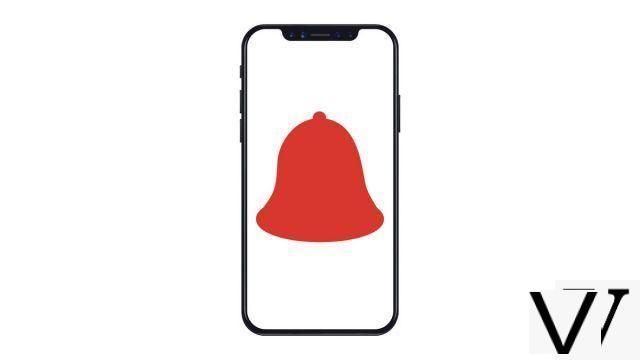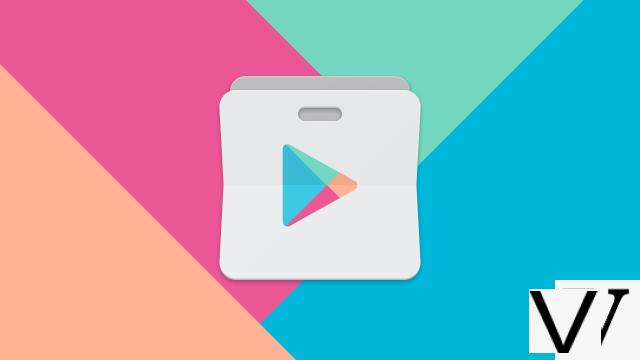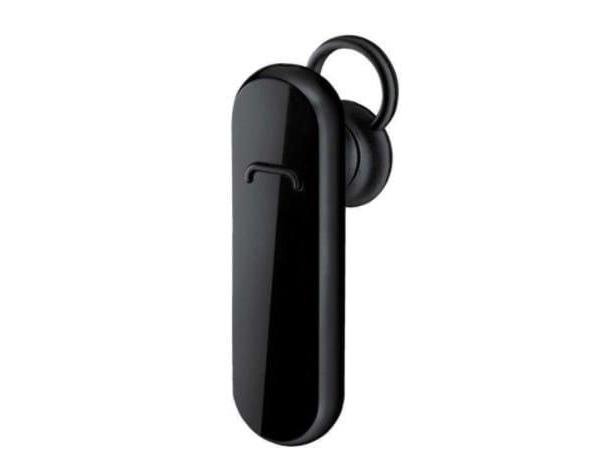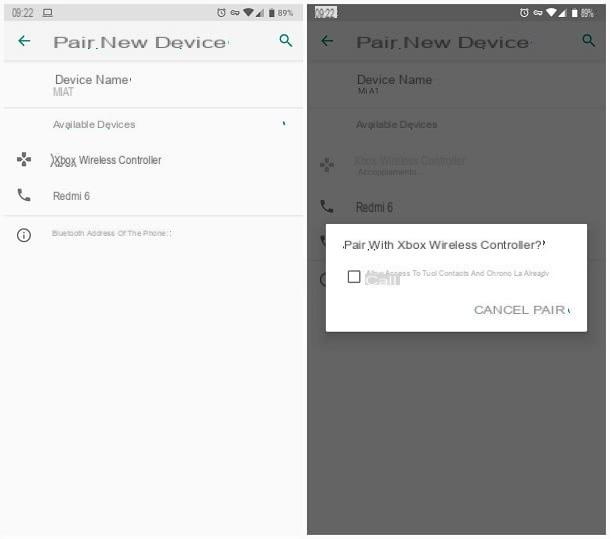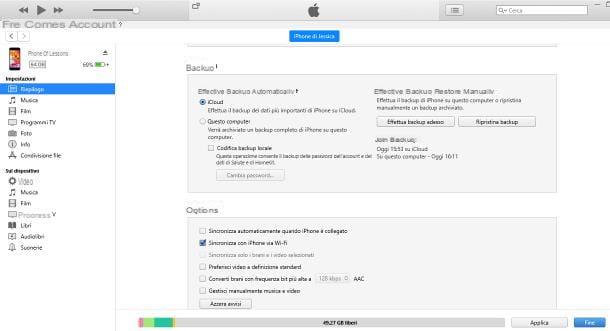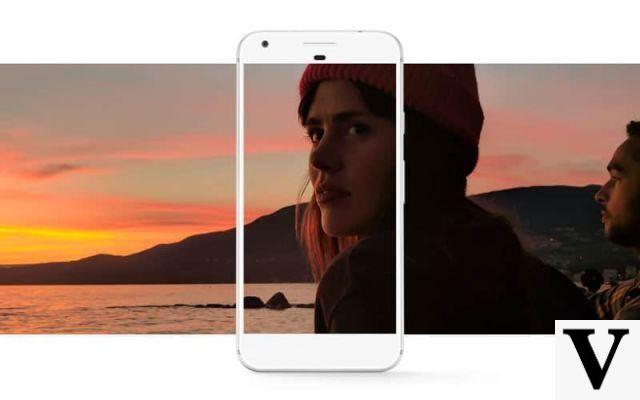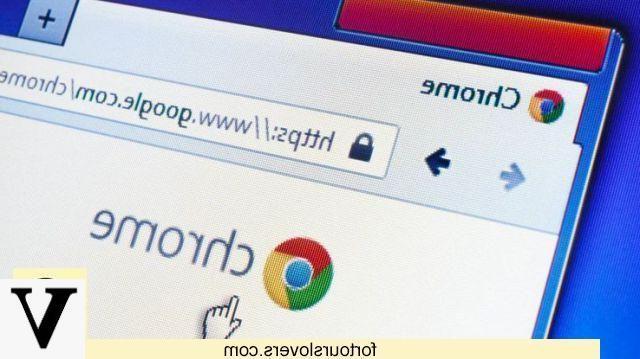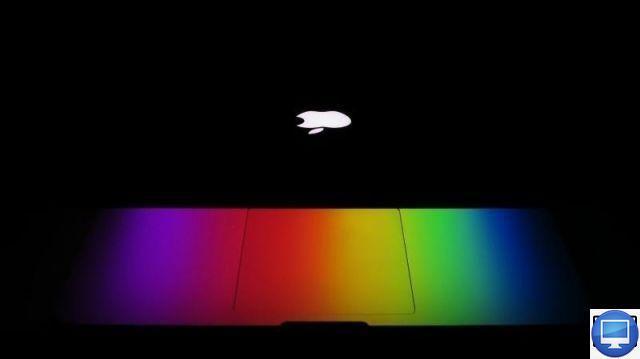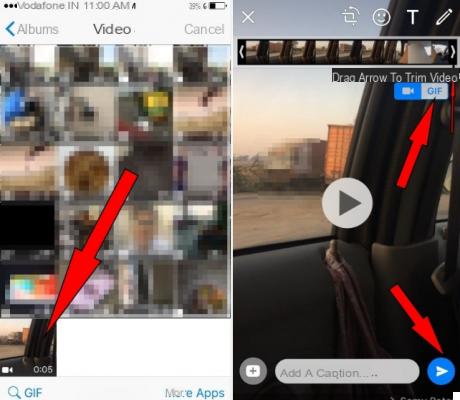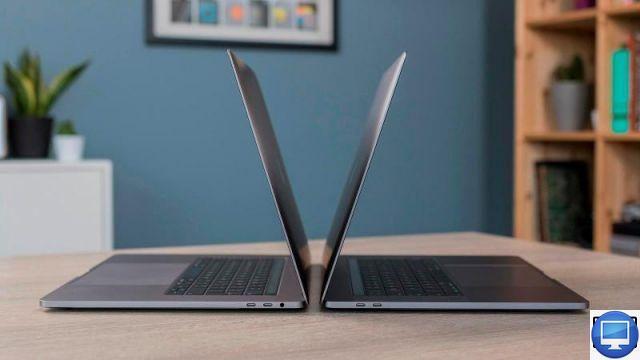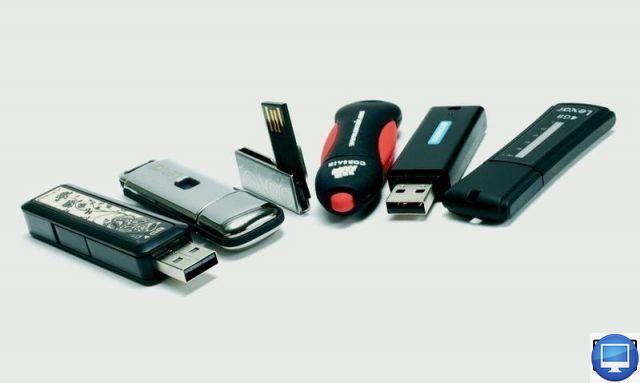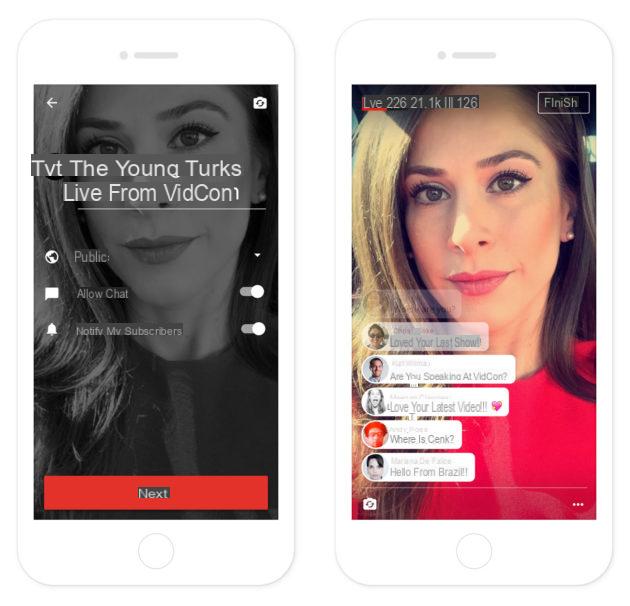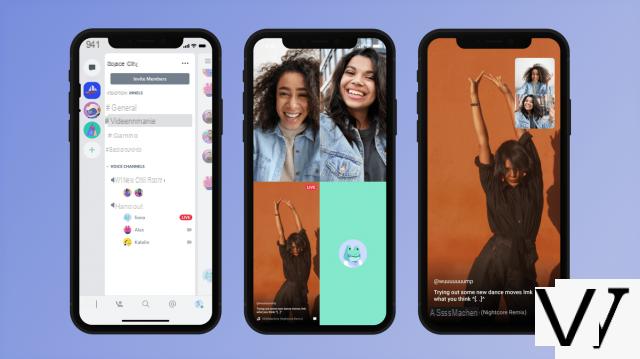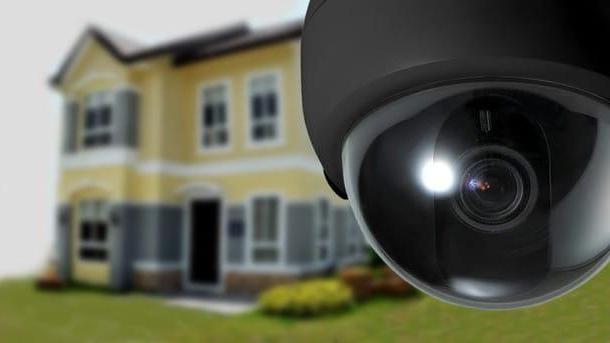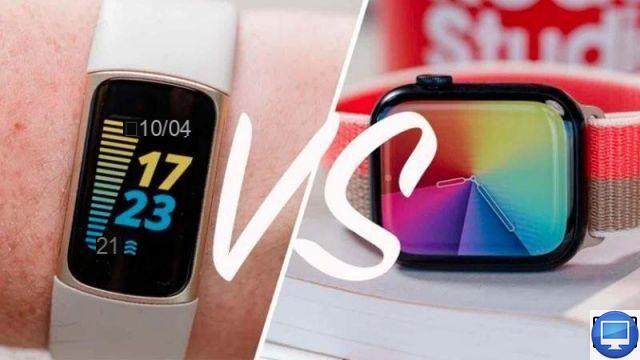
Are you looking for an activity tracker but you don't know which to choose between a Fitbit and an Apple Watch, especially with the release of the Series 7? We understand that the choice is difficult, that's why we compared them to determine which of the two manufacturers offer the best aspects: fitness tracking, heart rate monitoring, design, price, applications, autonomy, phone calls, music, etc.
Apple is known for its smartwatches and Fitbit for its activity bands, but their differences are blurring with the addition of functionality and beautiful touchscreens to Fitbit and health apps to the Apple Watch Series.
Apart from the Sense and the Versa family, few Fitbits have apps that can be found on smartwatches. However, their design, their fitness functions are quite comparable and close. Apple and Fitbit both make great products, so your choice is based on the features that matter most to you.
In our article, we'll compare the Apple Watch (Series 3, Watch SE, and Series 7) to the Fitbit Charge 5, Fitbit Versa 2 and 3, and Fitbit Sense. We focus on fitness and health functions, of course they offer much more than that.
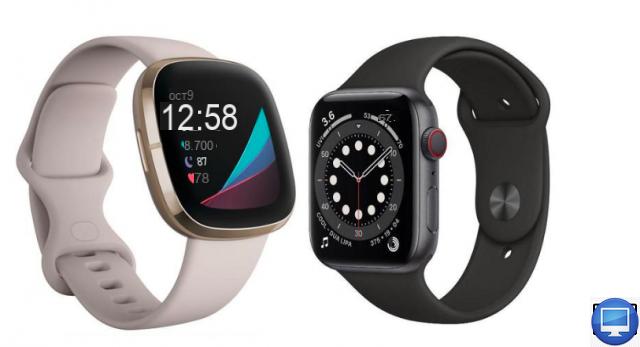
Physical activity tracking
Keeping in shape doesn't have to be synonymous with a marathon or a gym. Being active during the day is already good for your health.
Apple Watch and Fitbit bands are great for encouraging you to move more.
The Fitbit and Apple Watch are suitable for both people who want to measure their daily physical activity and athletes.
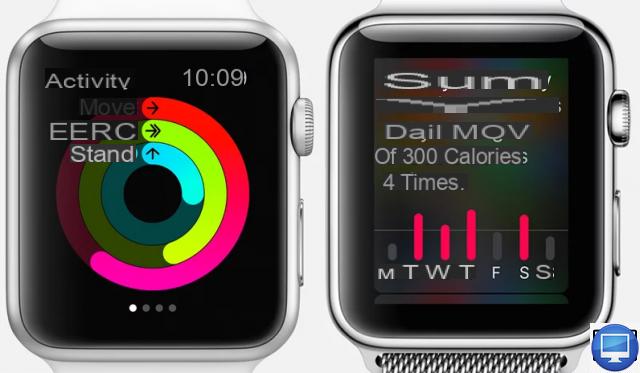
Additionally, Apple Watch Series 6 and 7, as well as Fitbit (except the Versa Lite Edition) all feature a barometric altimeter that counts distance traveled. Fitbits also sync your weight data calculated by the Aria scale, while Apple Watch syncs with any other health and fitness app that syncs with Apple Health on iPhone.
As a result, Fitbits range from everyday fitness, to active fitness (like the Apple Watch), to athletic and performance, with the Charge 5, Sense, and Versa 3 supporting running, cross- training, cycling, strength training and cardio exercises.
Serious athletes with very advanced and specific needs will probably prefer Garmin, Polar or Suunto watches. However, it is not impossible that some will turn to an Apple Watch, which since the 2nd generation has had GPS, or a Fitbit Charge 4, Versa 3 or Sense (not counting the Versa 2 and the Ionic).
The Series 3 and 7 have faster processors, but their battery life falls short. Their 4G connection allows you to leave your iPhone at home and run without it. Their equivalents at Fitbit would be the Sense and the Versa 3. They have GPS, store music and can be used as a contactless payment method.
Also, the Fitbit (with the exception of the Versa Edition Lite) are equipped with a barometric altimeter and synchronize the data collected with the Aria Air connected scale.
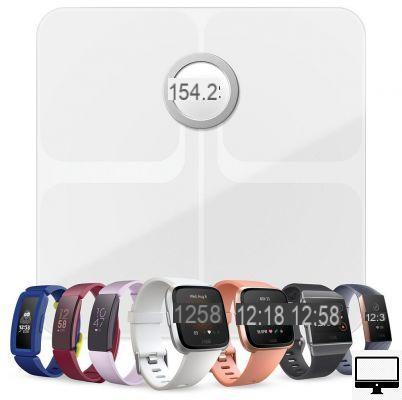
If physical exercise is at the heart of Fitbit products, for the Apple Watch it is only one of its features.
The Apple Watch has two sports apps: Activity, which relates to all things health, well-being, daily routines, and Exercise, which measures your workouts (running, cycling, and walking).
All data collected by the watch can be viewed on your iPhone via the Activity or Health app. The latter offers a better overview of your health since it integrates several sources of data (and not only those of your watch) and watchOS 7 has introduced new types of training (Dance, Recovery, Sheathing, Functional reinforcement) .
Fitbit bands are compatible with iOS, but if you want to integrate their data with your iPhone's Health app, you'll need to use a third-party app.
When you go too long without moving, the Apple Watch, like the Fitbits, sends you a notification to encourage you to move.
Apple's watch is compatible with apps from other developers and its partnership with Nike still stands.
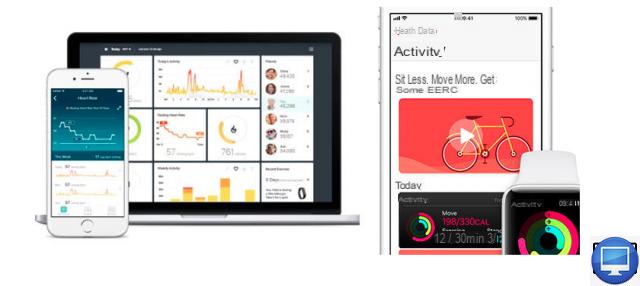
Set goals: Fitbit does it
The big difference here is that with Apple you can't set goals or other metrics except calorie burn. If burning calories isn't your primary goal, the Apple Watch won't do you much good.
By comparison, Fitbit lets you set specific goals such as your step count, distance traveled, calories burned, your activity per minute, floors climbed, and your hourly activity goal.
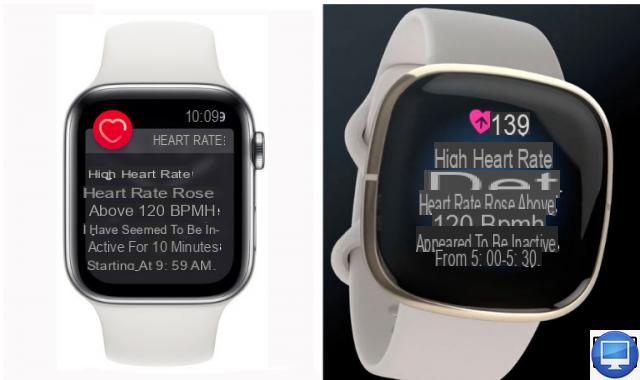
Heart rate monitor: Fitbit narrowly wins
To measure your heart rate, the Apple Watch and some Fitbits use photoplethysmography. Behind this barbaric term hides an almost simple principle that is not very different from manual pulse taking.
Using green LEDs placed on the back of their dials, these watches detect the volume of blood flowing through your wrist and the size of your blood capillaries. They record the fluctuations of these and deduce your heart rate.
Equipped Fitbit wristbands measure your heart rate 24/24. They can memorize your heart data at one-second intervals when you're exercising, and at five-second intervals in rest mode. According to Fitbit, its bracelets are more precise than other models because their LEDs are in good contact with the wrist.
The Apple Watch measures your heart rate only every 10 minutes during the day and intermittently when you use the Exercise app.
Apple has improved the Heart Rate app, which now measures your resting heart rate and recovery heart rate, and can send you notifications when an abnormality is detected.
Apple Watch Series 7 works with watchOS 8 pre-installed. This system offers a slew of new features and improvements, including better sleep tracking, new workouts (including Pilates and Tai Chi), support for bike fall detection, measurement more precise calories burned in activity on an electric bike, Siri voice feedback, etc.
According to Fitbit, its Sense and Versa 3 models have an improved heart rate monitor because its LEDs are in close contact with the wrist.
The Apple Watch has the ability to detect and alert you when your pulse is too high at rest, or irregular.
Fitbit has caught up with the Apple firm with the integration of FibriCheck (a Belgian application) which checks your heart rate, it works with Fitbit under OS 4.
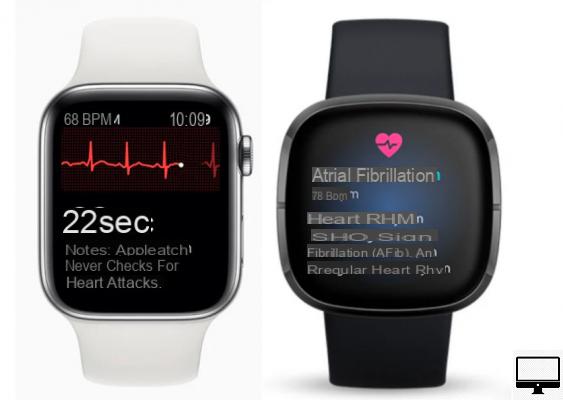
Heart Irregularity Check: Tie
Measuring heart rate also allows devices to check if the heartbeat is irregular, which can be a sign of atrial fibrillation, one of the main causes of stroke.
Both Apple and Fitbit have the ability to measure the user's electrocardiogram (ECG) signal.
The Fitbit Sense and Apple Watch include ECG tests. For example, by placing a finger on the digital crown of the watch, you can ask it to give you an electrocardiogram (ECG).
Each ECG app (Apple and Fitbit) has European certification (CE) and American authorization (FDA).
Checking blood oxygen levels (SpO2): Apple wins
The balance of blood oxygen saturation is vital for health.
A low level of oxygen in the blood can indicate a state of hypoxemia. If you are one of those who needs to monitor your blood oxygen levels then an SpO2 sensor will come in very handy. A normal SpO2 measurement is usually between 95 and 100%.
The Apple Watch and the latest Fitbit both offer SpO2 sensors to monitor this measurement. But, Apple's system is more flexible.
The new Apple Watch can take a blood oxygen reading in just 15 seconds at any time of the day, while Fitbit only does it during sleep, and you have to think about changing the watch face to do the reading, unless you subscribe to the Fitbit Premium service.
Calculating Calories Burned: Equality
Fitbit bands and the Apple Watch can estimate the calories you burn on a daily basis.
The Apple Watch determines the number of calories burned using data collected by the Activity app. The more you wear the watch, the more it knows your habits (level of daily activity, etc.) and the more accurate it is in counting calories.
The Apple Watch differentiates between “resting calories” (calories expended just for the basic functioning of your body) and “active calories” (those burned through physical activity). We prefer this approach to Fitbit's, which mixes the two.
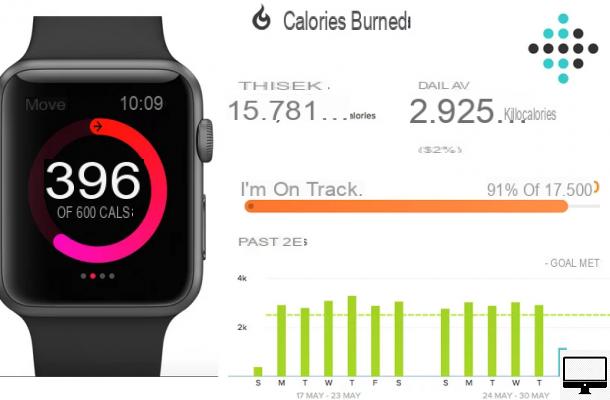
Fitbit estimates calories burned based on your basal metabolic rate calculated using your height, weight, age, and gender. To be more precise, bracelets with heart monitor take into account the data of the latter.
Fitbit calculates calories from midnight and therefore includes calories burned while sleeping, which is not possible with the Apple Watch which must be charged overnight.
When you sync your tracker, Fitbit replaces its estimate with the recovered data. You can also manually record activities so that the calories lost during your exercises are taken into account. When you enter your meals, Fitbit looks at your daily calorie intake and records the calories burned and consumed.
Sleep tracking: Fitbit wins hands down
A good night's sleep reduces the risk of getting sick or gaining weight.
As the autonomy of the Apple Watch is limited, the brand recommends recharging it every night.
However, its autonomy has been improved so that they can (in the case of basic use without GPS) last 3 full days and 2 nights. However, it's not as impressive as the Fitbits, which can last a week or more between charges.
With watchOS 7, Apple introduced the Sleep app to Series 3, SE, and 7. It helps you establish a regular bedtime routine and tracks your habits night after night.
Apple's Sleep app uses motion sensors, heart rate sensors and microphones to detect micro-movements and determine users' depth of sleep. The Watch then syncs with the iPhone or iPad to display your stats. With watchOS 7, Apple has further enhanced this capability with the addition of breath rate tracking.
The Fitbit Inspire 2, Versa 3, Sense and Charge 5 monitor your sleep and record your different phases of nocturnal rest (light, deep, paradoxical (dream phase)). They are detailed and give you a score on its quality.
Let's be clear, the results don't have the precision of an electroencephalogram, but they do give a good insight into your sleep through fluctuations in your heart rate.
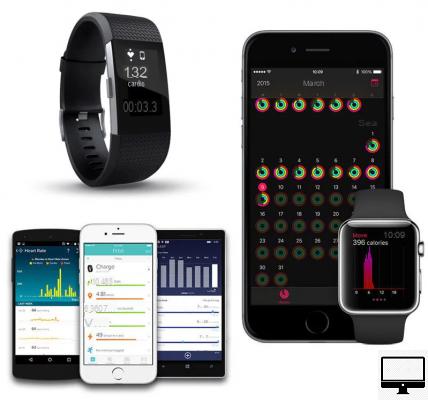
Apps: Fitbit unbeatable on fitness, Apple on everything else
Apple's Activity and Exercise apps have a very nice design, but the Fitbit app has an undeniable advantage, that of being available on all operating systems (iOS, Android). The app's dashboard is complete, detailed (graphs, stats, etc.) and you can organize the data collected as you wish.
Versa 3 and Sense work with the app and Fitbit Premium, which feature video workouts with audio coaches to motivate you and help push your limits.
Apple has launched Fitness+ for subscription-based sports sessions like Fitbit Premium.
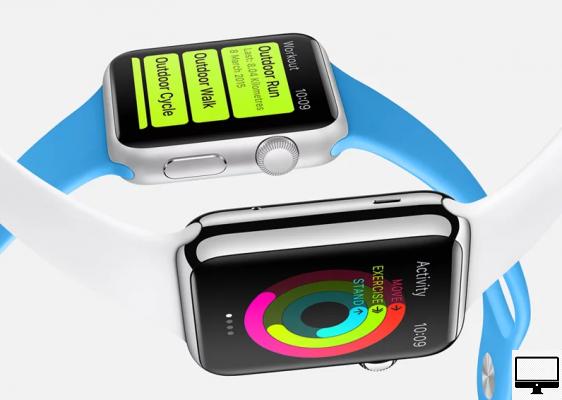
The Versa 3 and the Sense could compete better against the Apple Watch when they have a much wider range of non-fitness apps. For now, its apps are very limited outside of Fitbit's impressive health and fitness features and notification features, but more are expected to be made available, and there are over 500. To download.
If you want a wide range of non-health-related apps, the Watch or an Android equivalent will suit you better than a Fitbit, although they do have caller ID, text messages and on-screen calendar alerts.
Wearing both the Watch and the Versa 3 and Sense, we found that the apps most used by the Apple Watch were notifications, which are also handled very well by Fitbit.
The most used apps on Apple phones include Notifications, Exercise, Calendar, Camera Control, Weather and Maps. The Watch also lets you create an album of photos stored on your watch.
The Fitbits are limited almost exclusively to fitness functions. In addition, the Inspire 2, Charge 5, Versa 3, and Sense all come with caller ID and text notification. They ring and display the caller ID on the screen when your phone (iPhone, Android or Windows Phone) rings.
A Weather app is also included on the Fitbits, and on-screen video workouts on the Versa 3 and Sense.
Music: Apple wins
You can do a lot through the Apple Watch if you use Apple Music, add music, delete songs, mark what you like, put songs on hold, browse an artist's music and view the contents of albums and playlists.
You can play music stored on the Apple Watch, scroll through album art... You also have a degree of control when using Spotify on the Apple Watch.
Fitbit's music options vary by model. Previously, you could download 2,5 GB of music (about 300 songs) or podcasts on the Ionic, Versa and Versa 2. But, frustratingly, with the Sense and Versa 3, you can only use premium streaming services Pandora and Deezer, or use the watch to control Spotify Premium on your phone.
With the Fitbit Spotify app, control music (play, pause, skip forward and backward, and shuffle upcoming tracks), create playlists, and add tracks to your Spotify library right from the watch.
On Fitbit, it's not actually possible to store Spotify songs on the device and listen to them offline, so you need your phone with you, and an internet connection.
Although not an official feature, Fitbits can control Apple Music and Audible audiobook playback (play, pause, skip, and volume adjustment).
However, when it comes to offline music storage, Apple wins, but only if you use its Music service or Spotify.

Design: Fitbit catches up
The design of the Apple Watch is simple and elegant. As there are multiple dial/bracelet combinations, the watch adapts to all styles and all wrists with models ranging from the simple Sport to the Hermès edition. The choice of bracelets is wide and users appreciate their robustness, unlike the older, more disappointing Fitbit bracelets.
The Fitbits are more minimalist but less “customizable” since you only have the choice between a limited number of bracelets.
The Versa 2, Versa 3, and Sense look a lot like the Apple tocante, but have a decent selection of straps in small and large sizes. Other luxury models (mesh, stainless steel, leather) are available.
If you want a watch that looks... like a watch, then the Apple Watch and the Fitbit Versa 3 or Sense are for you.
The Fitbit Inspire 2, Luxe and Charge 5 are comfortable, and in fact it's often hard to tell you're wearing one, they're so lightweight.
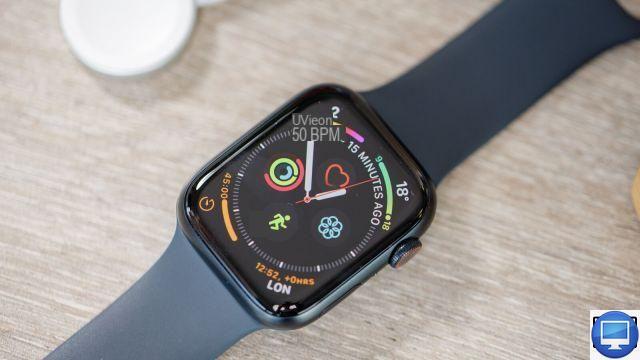
Screens: Apple dominates
Dimensions of Apple Watch and Fitbit : The Fitbit Sense and Versa 3 are slightly behind the smaller version of the Apple Watch Series 7. Both Fitbits have a 1,58-inch screen with a resolution of 336 x 336 pixels, while that the 7mm Apple Watch Series 41 sports a 1,69-inch display at 430 x 352.
The dimensions of the Sense and Versa 3 are 40,48 mm.
All Fitbits have an AMOLED display, with deeper blacks and sharper detail than the original Versa.
The Apple Watch screen has grown with Series 7, from 40mm and 44mm to 41mm and 45mm respectively. While that doesn't sound huge, combined with smaller bezels, that's a 20 per cent increase in overall screen size.
The Watch 7 comes in 41mm (430 x 352 pixels) and 45mm (484 x 396 pixels), thinner than the aging 3 (but still available), the 38mm model has a 272 x 340 resolution, and the one 42mm 312 x 390 resolution.
The Apple Watch has a touch screen that manages to reproduce very beautiful colors. While the minimalism of the Fitbits offers black and white displays, even if the Versa and Sense are colorful, they are less so than the Apple. The Inspire 2 has a monochrome display, while the Luxe and Charge 5 have a small but colorful display.
Since the screen is small, you might prefer the Apple Watch's digital crown for navigating, as your finger will cover a lot of the screen. Swiping works great, and this feature is available on the Charge 5, Luxe, Versa 3, and Sense models in the Fitbit lineup.
And on the Apple Watch it is possible to customize the display of the standby screen: different dials, photos...
The watch behaved very well during tests, carried out by the American magazine Consumer Reports, to determine the resistance of its screen to scratches. The Sport model proved to be resistant to all types of scratches except the masonry drill bit, and the sapphire screen could not be scratched at all!
The Ionic's display, protected by iPhone-like Gorilla Glass, is also impressive.
If you want to keep your screen always on, only the Fitbit Versa 2, Versa 3, Sense, Series 6 and 7 offer this possibility.
There's certainly less choice or frivolity with Fitbit, which sticks to its simple digital display on all but the Sense and Versa 3, which can display other wallpapers if desired. . But, they are less flashy and allow the Fitbits to benefit from considerable additional battery life compared to the Apple Watch, which tires quickly.
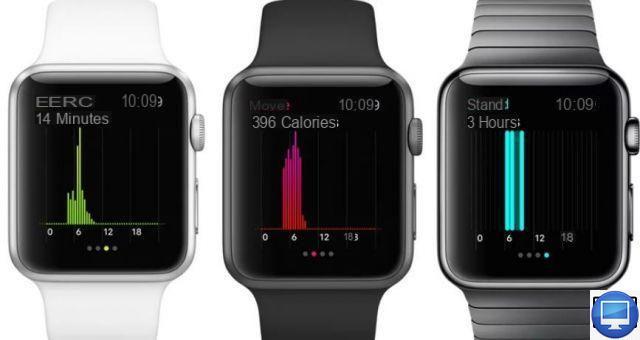
Built-in GPS: Apple leads
As we mentioned above, only the Apple Watch Series 1 was devoid of GPS, it had to use the GPS of your iPhone for its location. Which means you always have to have your iPhone with you to use apps like ViewRanger. But, since then, all Apple Watches have a GPS.
The problem with GPS is that it consumes a lot of battery. Since the Apple Watch doesn't have many, we recommend marathon runners look for Garmin or Polar watches.
The Fitbit, Versa 3, Sense and Charge 5 are also equipped with GPS.
The Versa Lite, Versa 3, Luxe and Inspire 2 need to connect to your smartphone for GPS functionality and their advantage is that they are compatible with all types of phones (not just iPhone).
To get similar functions with other Fitbits, you can use the MobileRun app. It's available to all GPS-enabled device users using the Fitbit apps for iOS, Android, and Windows Phone.
Apple Watch can also be linked to other iOS apps, such as MotionX GPS and RunKeeper, which rely on iPhone GPS. The Ionic model comes with the famous Strava app, which lets you track your runs and bike rides with GPS and more.
Fitbit's multiple Sport mode also lets you track your cycling trips (distance, location, average speed, heart rate, and calories burned).
The Apple Watch's Maps app, on the other hand, lends itself well to long runs. Both the Watch and Fitbit have a Weather app.
Apple Watch Series 6 introduced Location, Compass (it tells you orientation, inclination, elevation, longitude, and latitude), Maps, International Emergency Call, and more.
Most recent models of the Apple Watch also offer the International SOS service, which works by pressing and holding the button to call emergency services.
Answer calls from your wrist: Apple wins but Fibit is catching up
With the Apple Watch, you can both make and receive voice calls. Siri can dial a number for you.
If someone calls you while you're wearing your Apple Watch (and it's within range of your iPhone), you'll be alerted with a subtle vibration as well as a ringtone.
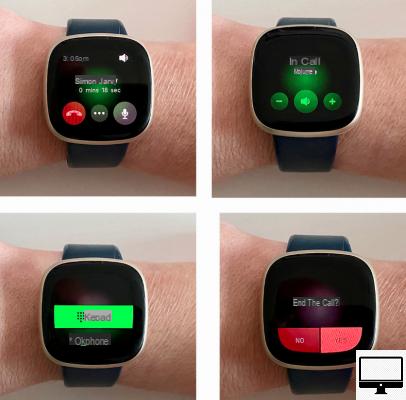
There's a speaker and a microphone so you can chat without taking your iPhone out of your bag or pocket. To make or answer the call, it is also possible to transfer it from the watch to the iPhone or use Bluetooth headphones.
So you can talk to her and vice versa (Siri only speaks in Series 3). The microphone can also be used to dictate messages or chat with friends. It can also store up to 32 GB of data.
The only Fitbits with a microphone are the Versa 2, Versa 3, and Sense, which use the mic to operate Amazon's Alexa and Google Assistant. However, you cannot yet listen to or answer calls using them. The Versa 3 and Sense have a speakerphone for "coming" calls and voice-assist features.
Battery: Fitbit definitely wins
The Apple Watch has so many features (calls, messages, music, photos…) that its battery is consumed much faster than the usual connected bracelets. It must therefore be recharged every evening.
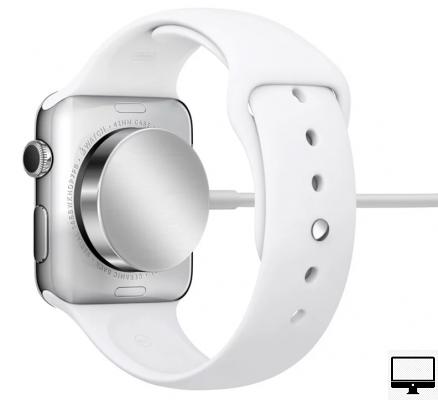
According to Apple, its battery lasts 18 hours (passive and active use), or 90 glances per hour, 90 notifications, 45 minutes of non-stop app use and 30 minutes of exercise while listening to music via Bluetooth.
You must therefore recharge your Apple Watch every evening unless you only use it to look at the time.
From the Series 3, Apple has improved the autonomy of its connected watches, they can last 3 days with light use but Apple admits that it still lacks power.
The Fitbits have enough energy to run for 5 days in a row! If you wish, you can therefore wear them during the night to know the quality of your sleep.
The Charge 5 model can last up to a week, and the Inspire 10 2 days. If you use Ionic GPS or Watch GPS a lot then its battery will drain much faster. When the GPS is activated, the Fitbits turn off after 10 hours and 5 for the Watch.
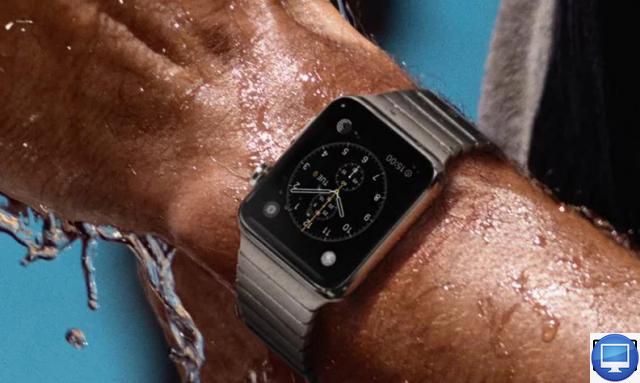
Waterproofness: Tied
The Apple Watch Series are water resistant up to 50 meters. The brand nevertheless specifies that they are not suitable for certain sports activities such as scuba diving or water skiing.
The Fitbits are also water resistant to 50m and are suitable for swimming.
Awards: Fitbit on the 1st step of the podium
When they achieve personal bests or milestones, Apple Watch users receive a special badge for each achievement, which is then recorded in their iPhone's Activity app.
Fitbit also distributes badges, linking them to comparative distances. Thus, you will get a Sahara badge when you have completed the equivalent distance.
The ability to compete with your friends at Fitbit (not only) is a real motivation. It's a fun way to push your psychological limits.
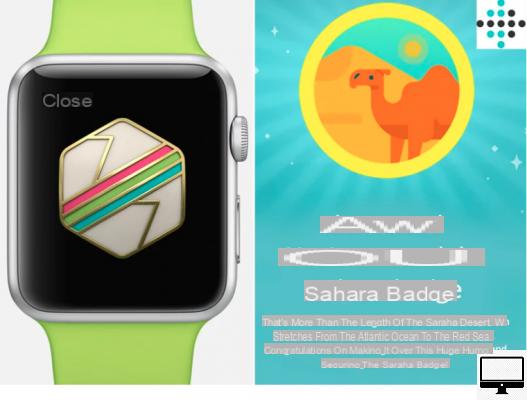
Apple Watch owners can share their activities with their friends to motivate each other, but it's not as easy as with Fitbit, and you may have few friends or relatives who own a Watch.
Apple also offers activity achievement badges, but there aren't as many adventures and challenges as at Fitbit, although some are reserved for Premium subscribers.
Find my...: Apple wins, Fitbit catches up
If you misplace your smartwatch or fall off your wrist while running, your chances of finding it without help are slim.
Fortunately, Apple has integrated its Find My technology into its Apple Watch, as it has with most of its products. Automatically enabled, this technology uses location services Wi-Fi or cellular connections to detect where your Apple device was last saved. Apple Watch with GPS can use GPS and a trusted Wi-Fi connection.
If your Apple Watch is paired with your iPhone, then it's set up automatically when you turn on Find My iPhone.
You can see your Apple Watch devices on a map, play a sound to find them, display a message about a lost watch, lock it until you find it, and even erase its data if you can't get it back. hand on it.
If your Apple Watch goes missing, you can immediately lock it from iCloud.com or your paired iPhone. Once found, you can unlock it.
It is not possible to use such technology with most Fitbits. The company recently partnered with location specialist Tile to bring its device finder software to the entry-level Fitbit Inspire 2. We hope other Fitbits will soon feature Tile technology.
In the meantime, you'll need the app and a bit of luck. Check the Fitbit app for the latest sync from your device. If it synced recently, it's probably not far from your phone, within 10 meters of Bluetooth range.
You can also try using a Bluetooth locator app that will help you find your device within 30 meters if its battery hasn't run out yet.
The hearing: Apple wins
Apple introduced the Noise app with watchOS 6, which measures ambient sound levels and exposure time. watchOS 7 adds more hearing health aids with audio notifications from headphones.
These will tell you how loud the audio is in your headphones with an iPhone, iPod touch, or Apple Watch, and how those levels may impact your hearing over time.
The Health app can even control the maximum volume level of headphones.
Fitbit Premium vs Apple Fitness+
Apple and Fitbit both offer special services for their respective subscribers, where additional functions, certain statistics and personalized information are paid.
Apple's Fitness+ service focuses on workouts and fitness, while the Fitbit Premium service covers fitness, health, nutrition and wellness.
Apple's Fitness+ subscription service costs €9,99/month or €79,99/year. Fitness+ can be shared among up to six family members for the same price. With the purchase of an Apple Watch, new users get three months free of Fitness+.
It includes home workout programs that complement the Watch's fitness features, so your activity is tracked alongside workout videos, which can be watched on your iPhone, iPad or AppleTV.
Workout categories include High Intensity Interval Training (HIIT), Strength Training, Yoga, Dance, Core Exercise, Cycling, Treadmill (for running and walking), rowing and the return to calm.
Virtual trainers adapt the workout to your level.
After the workout, you will be given metrics of your workout, such as heart rate, duration, pace, and calories burned. As you achieve different goals, the watch's activity ring is reflected on the workout video screen.
Fitbit Premium has been around longer and offers more than workouts, including guided programs to help you stay active, eat and sleep well, and manage stress.
Its price is similar to that of Apple's service, i.e. €8,99/month or €79,99/year.
It suggests video and audio workouts (walking, strength training, cardio, dance, martial arts, yoga, etc.) viewable on your phone through the Fitbit app, and even some from your Fitbit watch.
Subscribers receive personalized insights and a wellness report based on their stats. There are also challenges reserved for Premium subscribers.
Fitbit Premium can be trialled for free for three months, and new users get a free Premium subscription with the purchase of a tracker or smartwatch, for up to a year with the Fitbit Inspire 2.
There is no family subscription option for Fitbit Premium.
Compatibility: the Watch is reserved for the iPhone
Fitbits can be used with Android and iOS. It is also not necessary to have a smartphone to use a Fitbit since you can synchronize the bracelet with the brand's application directly on your computer.
Its wristbands also work with other apps like MapMyRun, MyFitnessPal, Runkeeper, Endomondo, Strava and others… The Sense and Versa 3 have their own built-in running apps.
The Apple Watch is (surprisingly) only compatible with iOS products, so to use it you need an iPhone.
Apple Watch can be used with apps like Nike+Run Club, Runtastic Pro, Pocket Yoga, MapMyRun and Cyclemeter GPS.
Price: Apple is revising them downwards
If there is one criterion that fundamentally distinguishes the Apple Watch from Fitbit bracelets, it is the price.
The Apple Watch, while by no means the most expensive watch in the world, is the costliest of smartwatches.
However, with the release of new Watches, Apple has reduced its oldest model, namely the 3. Despite these efforts, Fitbit remains more affordable.
The Watch SE is a mid-range watch, between the 3 and the 7. It is sold from €299.
The Series 3 starts from €219, and the Series 7 released in 2021 starts at €429. The Series 6 has been discontinued by Apple, but is available from third-party vendors.
By comparison, Fitbit wristbands start at €69,95 for the Inspire 2. The Charge 5 is €179,95, the Versa 3 starts at €169,95, and the Sense at €239,95.
So even the most expensive Fitbit costs about the same as the cheapest Watch (SE). If you buy your watch from Amazon, you can take advantage of better prices.
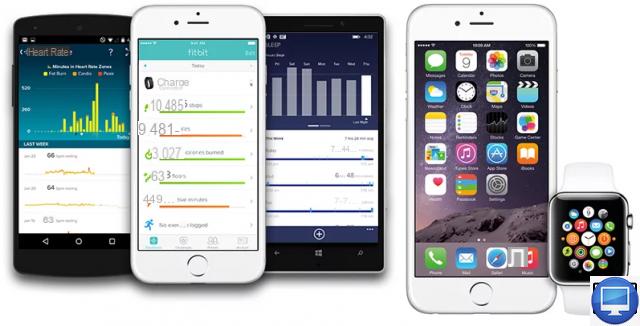
Fitbit or Apple Watch? : our verdict
If fitness is your primary goal, we think the Fitbits are best (especially if you play multiple sports), but the Apple Watch, of course, offers a lot more than activity tracking and health monitoring. cardiac frequency.
The Apple Watch's growing ecosystem of apps will make this tocante a much more versatile device than just a fitness bracelet. And the new Apple Watch Series 7 with built-in GPS and 4G is a major step forward in Apple's creation of a true activity tracker, despite improved but relatively poor battery life.
But it comes at a pretty steep price.
Fitbits have much better battery life (the Charge 5 lasts up to a week!), so they don't need to be charged every night.
Detailed sleep tracking can tell almost as much about a person's health as their daytime exercise routine. Apple has added a "Sleep" application, but the Series' short battery life makes it difficult to do so. Sleep tracking on the Fitbit is much easier, although Fitbit hides some of the metrics for its Premium subscribers.
If you have an Android, the Apple Watch just isn't for you. Without an iPhone, she's pretty much useless.
Of course, one of the great things about the Apple Watch is its ability to make and receive phone calls, which is matched only by the Fitbit Versa 3 and Sense.
For fitness and activity tracking, we therefore vote for the Fitbits, but we applaud Apple for the Watch's fitness apps, which should inspire Watch owners to get up and move more. .
If you're looking for a sports-centric watch, then consider Garmin or Polar.
Recommended articles:
- The best Apple Watch Series straps
- Which is the best Fitbit?
- The best Fitbit for kids
- The best connected watches of the moment
- The best connected bracelets on the market




![[iPhone] iMessage Doesn't Work: No Messages Are Received | iphonexpertise - Official Site](/images/posts/6b02db17523b3c290f81b739e105ae3c-0.jpg)
